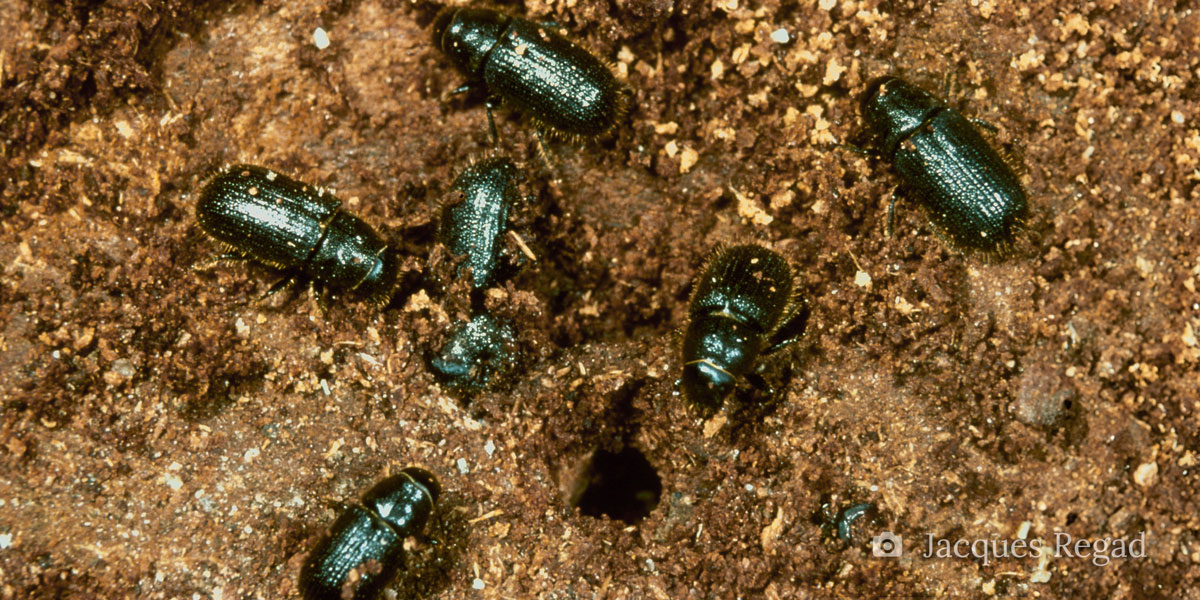
Effects of Mountain Pine Beetle Outbreaks on Population Dynamics of Secondary Bark and Ambrosia Beetles
Mountain pine beetle (MPB) has expanded its range in western Canada and impacted millions of hectares of lodgepole pine forests, which has resulted in live pine trees mixed with dead and dying pine trees in the same stand. Both dying and dead trees are frequently attacked by bark and woodboring beetle species. These beetles typically do not attack healthy trees. However, when forest stand conditions (e.g., increased number of dying or stressed trees as a result of wildfire, insect defoliation) allow them to increase their population density, they are capable of colonizing and killing live pine trees. Currently, it is unknown whether dead and dying pine trees in post-MPB pine stands can promote population growth of bark and woodboring beetles, which subsequently kill the remaining live pine trees in the same stands. Thus, we will investigate the population densities of three functional groups associated with MPB including bark beetles, woodboring beetles, and their predators in Alberta.
Objective
We are interested in determining whether percent lodgepole pine mortality, the total number of dead trees, or health conditions of residual trees affects the abundance of bark and woodboring beetles and their predators. Overall, the outcome of this study could help explain the complex interaction among MPB, secondary beetles and their predators after MPB outbreak in novel habitats and may be relevant for the restoration of lodgepole pine forests in post-MPB outbreak stands.
We hypothesize that residual live mature pine trees will be subject to increased beetle attacks in post- MPB stands; that post-MPB stands present conditions that will increase bark and woodboring beetles of lodgepole pine trees, hampering future lodgepole pine regeneration.








